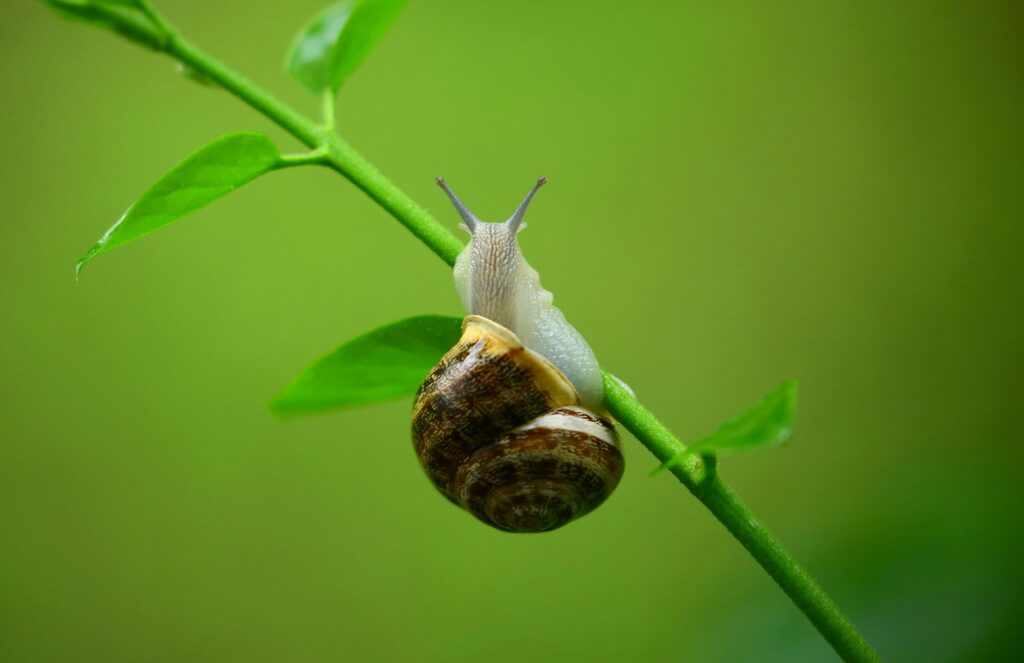Snail Mucin in Skincare: A Trend Rooted in Centuries of Tradition
Today, snail mucin is prized for smoothing and glow-boosting properties—but the history of snail mucin skincare spans centuries, long before it hit social feeds.
This isn’t the tale of a trendy new extract. It’s the evolution of an ingredient that’s been quietly helping skin heal since the time of Hippocrates. And like many of the best skincare stories, it began not in a lab—but on the skin of people who simply paid attention to nature.
In this post, we’re looking at snail mucin through the long lens: ancient remedies, accidental discoveries, and the slow but steady work of science confirming what tradition suggested.
- Snail Mucin in Skincare: A Trend Rooted in Centuries of Tradition
- Ancient Medicine: How Healers First Discovered Snail Mucin’s Skin Benefits
- The Farm Discovery That Reintroduced Snail Mucin to Modern Skincare
- Snail Mucin Under the Microscope: What Modern Science Tells Us Now
- Snail Mucin in Modern Skincare?
- Choosing the Right Snail Mucin Skincare Product: Formulation Is Everything
- Snail Mucin vs. Other Skincare Actives: When to Use What
- What We’ve Learned from Snail Mucin’s Long Dermatologic Journey
- Tried Snail Mucin? What are Your Results?
Ancient Medicine: How Healers First Discovered Snail Mucin’s Skin Benefits
The history of snail mucin skincare begins before modern dermatology—when it was used in traditional medicine.
- Ancient Greece (5th century BCE): Hippocrates reportedly used crushed snails blended with sour milk to reduce inflammation—a surprisingly advanced application for its time.
- Southern Italy: Generations of rural families applied snail slime to burns, acne lesions, and thickened skin, often straight from the shell.
- Han Dynasty China: Snail-based ointments and poultices were used for redness and swelling, described in herbal medical texts.
Fun Fact: Snails secrete mucin not as a defense—but as a survival strategy. Their mucous shields them from sun damage, infection, and physical injury. Humans, as it turns out, benefit from many of the same mechanisms.
These early remedies weren’t random. People realised that snail secretions could help skin recover, and reduce irritation along the way.

Fun Fact:
Snails secrete mucin not as a defense—but as a survival strategy. Their mucous shields them from sun damage, infection, and physical injury. Humans, as it turns out, benefit from many of the same mechanisms.
The Farm Discovery That Reintroduced Snail Mucin to Modern Skincare
Fast forward to the late 20th century: a group of Chilean snail farmers noticed something strange. Despite daily cuts and abrasions from harvesting snail shells, their hands healed quickly and without scarring. Not only that—their skin felt softer.
This observation triggered curiosity that led to the first formal studies and extraction methods:
- 1993: A Chilean team patented a skincare formulation using Helix aspersa Müller mucin.
- 1995: The cream Elicina was launched, initially marketed for scar healing and skin smoothing.
At first, the skincare industry treated it as a novelty. But the farmers’ anecdotal evidence laid the groundwork for scientific exploration.
Snail Mucin Under the Microscope: What Modern Science Tells Us Now
Over the last two decades, studies have begun to validate what ancient healers and Chilean farmers suspected: snail mucin is more than a passive hydrator.
| Skin Benefit | Key Compounds in Mucin | How It Works |
| Wound healing | Glycoproteins, growth factors | Promotes fibroblast activity, ECM repair |
| Hydration & barrier | Glycosaminoglycans (like hyaluronic acid) | Retains water, reduces transepidermal loss |
| Redness relief | Allantoin, antioxidant enzymes | Calms inflammation, supports recovery |
| Antioxidant defense | Superoxide dismutase, Gpx-1 | Reduces oxidative stress, slows collagen loss |
| Anti-aging effects | Peptides, glycolic acid, elastin | Mild exfoliation, collagen preservation |
Pro Tip: The most compelling data exists for topical snail mucin. Oral versions show promise in mice, but no human trials exist yet.

Key Takeaway:
Snail mucin is a biologically active compound with documented effects on skin hydration, repair, inflammation, and oxidative stress.
Snail Mucin in Modern Skincare?
Snail mucin has come a long way—from backyard remedy to beauty aisle favorite. But in the broader history of snail mucin skincare, where does it really belong in today’s dermatology?
Current Cosmetic Use
Snail mucin is a popular ingredient in serums, moisturizers, and masks—especially in Korean beauty routines. Its strengths?
- Hydration and Barrier Repair: Its glycosaminoglycan-rich composition attracts moisture while reinforcing the skin’s natural barrier.
- Soothing Irritated Skin: The allantoin and antioxidants help reduce redness and sensitivity.
- Acne Recovery: Anti-inflammatory properties combined with mild exfoliation may aid post-acne healing.
Clinical Applications (Still Emerging)
There’s growing interest in using snail mucin in more therapeutic settings, such as:
- Post-procedure skin repair (e.g., after laser or chemical peels)
- Chronic skin conditions like atopic dermatitis (though data is early-stage)
- Adjunctive anti-aging alongside ingredients like retinoids
Evidence Snapshot: While topical snail mucin has been shown to improve hydration, elasticity, and healing in both animal and human skin models, it is still not an established part of clinical dermatology. Further trials are needed to define where it fits alongside traditional actives.
Choosing the Right Snail Mucin Skincare Product: Formulation Is Everything
Many skincare products list snail mucin, but the devil is in the details. Effective formulations are backed by concentration, pH balance, and processing integrity.
| What to Look For | Why It Matters |
| SSF concentration above 70% | Ensures therapeutic levels aligned with most lab studies |
| pH between 4.5 and 5.5 | Maintains enzymatic stability and supports skin’s acid mantle |
| Fragrance-free formulas | Reduces risk of irritation and sensitization |
| Enzyme-processed or filtered | Preserves active proteins and antioxidant enzymes |
| Ethical sourcing | Aligns with responsible skincare practices and transparency |

Pro Tip: If snail mucin appears low on the ingredients list (especially after fragrance or silicones), its effects are likely minimal.
Snail Mucin vs. Other Skincare Actives: When to Use What
| Ingredient | What It Does Well | Trade-offs | Best For |
| Retinoids | Boost collagen, reduce wrinkles, clear acne | Can cause dryness, irritation, photosensitivity | Aging skin, acne, uneven texture |
| Hyaluronic acid | Deep hydration, plumping effect | Doesn’t support barrier repair alone | Dehydrated or tight-feeling skin |
| Niacinamide | Brightens, strengthens barrier, calms redness | Results may be subtle, can cause flushing in high doses | Red, uneven, or oily-prone skin |
| Vitamin C | Brightens skin, supports collagen | Can oxidize, unstable in many formulas | Dullness, hyperpigmentation, early aging |
| Peptides | Signal collagen production, improve firmness | Often need pairing with other actives | Mild sagging, early aging prevention |
| Aloe vera | Soothes, hydrates, helps calm inflammation | Not long-lasting, lacks barrier repair | Irritated, sun-exposed, or inflamed skin |
| Snail mucin | Hydrates, calms, promotes repair | Subtle results, not a replacement for actives | Sensitive, irritated, or barrier-compromised skin |

Bottom Line:
Snail mucin doesn’t compete with heavy-hitters like retinoids or vitamin C.
But it excels in situations where the skin is stressed, reactive, or recovering—and when you want to repair it gently.
What We’ve Learned from Snail Mucin’s Long Dermatologic Journey
Here’s what we know for sure:
- It has a diverse mix of peptides, antioxidants, and glycoproteins that support skin recovery.
- Its effects are strongest in topical use, with early but encouraging results in animal oral studies.
- Its popularity isn’t just hype—it’s historically and biologically grounded.
Best Practice: Look for snail mucin in well-formulated products, especially post-exfoliation or when your barrier feels compromised.
Tried Snail Mucin? What are Your Results?
Whether you’ve loved it, left it, or are still on the fence—share your take. What’s worked? What hasn’t? What are your thoughts on the texture? Tag a product or drop a question, and let’s decode it together.
Talk to you soon!
Dr Bozica
References:
https://onlinelibrary.wiley.com/doi/full/10.1111/jocd.16269
https://jamanetwork.com/journals/jamadermatology/fullarticle/2642949
https://www.sciencedirect.com/science/article/pii/S1756464622001232